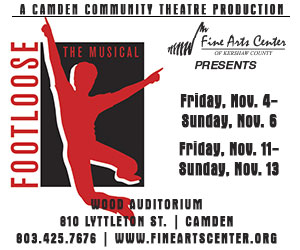For a long time if you wanted new music at the Spoleto Festival, you had to go to a small hall for the late afternoon Music in Time series. During the past few years, new music keeps getting bigger and bigger stages. Part of this is due to Music in Time founder John Kennedy’s more prominent role with the festival as resident conductor and some of it is the result of the rising tide of interest in contemporary music.
Evidence could be found Sunday with the Orchestra Uncaged concert in Sottile Theater. The concert juxtaposed works by one of the pioneers of modern music – John Cage – with that of a relative newcomer – Jonny Greenwood (best known as guitarist for Radiohead.)
Cage isn’t someone who shows up at the festival often and Greenwood’s work has never been played at the festival.
The concert offered a grouping of three Cage works written the year before his death in 1992. The three pieces Twenty-six, Twenty-eight and Twenty Nine are named both for the duration of each and the number of instruments required for each. Unlike some of Cage’s works these do not call for extended instrumental techniques or alterations of instruments by doing things like jamming the strings with chopsticks.
Seems simple enough, but not so fast.
For this concert the three works were all performed at the same time, the shorter works nesting inside the larger ones and the various ensembles filling the stage with about 60 musicians. This doesn’t mean it sounded like three different works being played because the pieces are written in a way that they can be played one at a time, two at a time, or all at once.
Within a larger overall sound, various musicians engaged in “sound events” and they get to decide, within certain time constraints, when they are going to make said sounds. This technique, dubbed “time brackets,” doesn’t change much for the listener. What we still get is an ongoing wash of sound with little change tempo or volume interrupted just momentarily by the occasional “sound event.” These events are often just one quick note played at the same volume as the rest of the orchestra. It’s often difficult to ascertain exactly where the sound is coming from or what instrument is making it. It was fun to search the packed stage for tell-tale signs of movement. In one case the tip of a rapidly-moving violin bow – the only thing visible at the back of the stage – was the giveaway.
At times the piece(s) reminded one of a gentle summer night sounds – the wind in the trees, crickets chirping, the a/c fan – and the sudden arrival and departure of a bullfrog croak, a distant train whistle, an owl’s hoot and a motorcycle a couple of blocks over.
These are the only three of Cage’s large body of work that have not previously been performed in the United States. The festival deserves our thanks for finally premiering them and doing them so well.
The festival has never before performed works by Greenwood and the concert included his two biggest and most recent classical pieces.
48 Responses to Polymorphia is Greenwood’s string orchestra tribute to Polish composer Krzysztof Penderecki’s 1961 composition Polymorphia. The Penderecki work ended on a C major chord and Greenwood picks that, and various distortions, as his building block. 48 Responses uses large tone clusters and between shivers and screeches, snippets of tunes disintegrate. Like the Cage, 48 Responses was largely one big sound. During the final section of the work, the string players set down their bows and picked up huge seedpods which they used both to bow and as percussion instruments. It seemed gimmicky, but sounded great.
Doghouse is a much more accessible and traditional work scored for string trio and large orchestra. Greenwood has said that the work was inspired by imagining what sort of musical scores he might find in the archives of the BBC studio orchestra, which premiered the piece in 2010, especially if some of those scores were moth eaten. The piece nods to various musical styles one might associate with the BBC and its many projects. It also isn’t surprising to learn that selections from it were used as a film score. Doghouse is a much more dynamic work than 48 with snatches of dissonance throughout, the musical falling apart and coming together again.
Although some people still erroneously think of the festival as a place of fairly conservative musical offerings, it has become anything but with concerts like this and new operas (two this year.) Because of the way the festival is set up, many people attend events they might not go to at home, but not all of them are completely happy about this. The audience at the Uncaged concert was quite diverse and certainly skewed younger than at most of the larger concerts. The house was nearly full. As might be expected, quite a few drifted away after the Cage and a few more as the night went on, but in the end there was still a good solid crowd that very much appreciated what it had just heard.
– Jeffrey Day






.jpg)